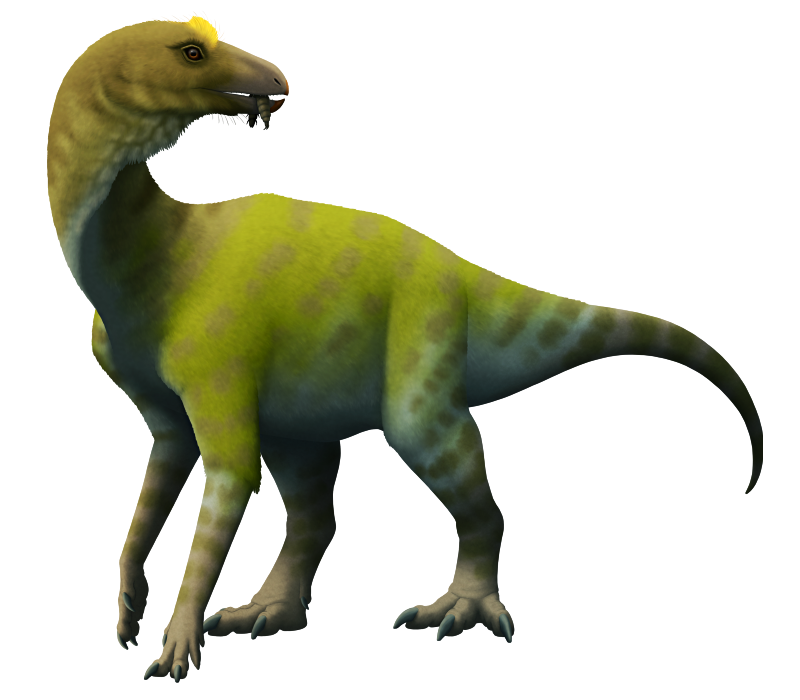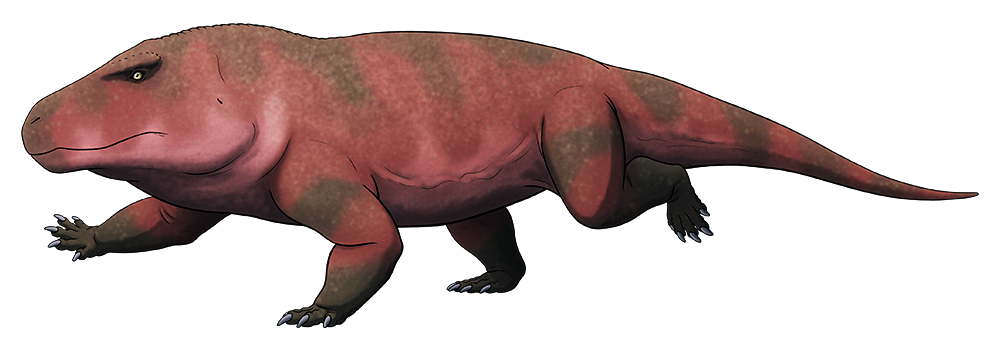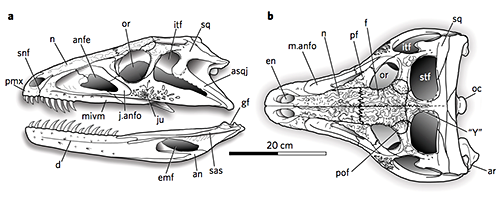Proterochampsids were a group of Triassic archosauriformes, closely related to the true archosaurs (crocodilians, pterosaurs, and dinosaurs/birds).
Known only from South America between about 242 and 205 million years ago, these reptiles’ heads were wide at the back but very narrow along the snout, often with prominent bony bumps and ridges on their skulls, and they had less osteoderm armor on their bodies than other archosauriformes.
They’ve traditionally been interpreted as very crocodile-like and semi-aquatic, but their long slender limbs and presence in rather arid paleoenvironments suggest they may have been more terrestrial fast-running predators.
Tropidosuchus romeri here lived about 235 million years ago in what is now Argentina. It was one of the smaller proterochampsids, only about 50cm long (1’8″), with just a single row of osteoderms along its back, and had larger and lower-set eyes compared to its relatives.
CT scans of its braincase indicate it had a particularly good sense of smell, and it may have relied mainly on scent to locate prey.











